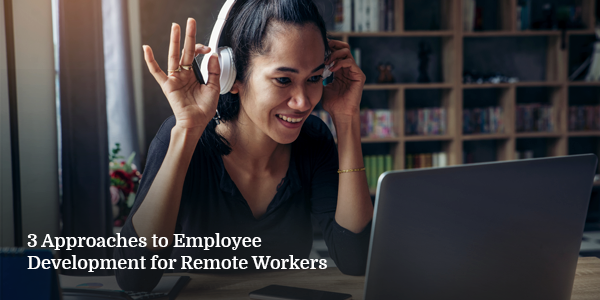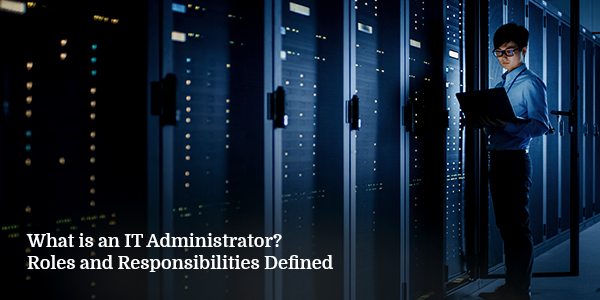
When you invest in employee development, you’re helping your employees grow and learn new skills so they can carry out their responsibilities more effectively. You’re also ensuring they have the resources to do what needs to be done.
For remote workers, employee development is essential. One statistic indicates that 87% of millennials look for professional development and growth opportunities.
Another reason development can feel amiss for remote workers is the COVID-19 pandemic. It drastically changed how people work, including the lack of socialization and communication that may hinder them from developing their skills.
That said, investing in your employees is key to retention. It’s more crucial than ever because of the Great Resignation, which led to one in five employees leaving their jobs in 2021.
In this article, you will learn different approaches to employee development for remote workers.
3 Approaches to Employee Development
1. Virtual learning-based approach
Virtual learning means upskilling or training employees through online classes, webinars, etc. It’s also known as e-learning or online training. This method can be used to train them in a variety of areas, including soft skills like communication and teamwork.
It is especially useful when you want to teach employees who aren’t always in the office, such as those who work remotely. Methods under this approach include:
- Online classes: Online courses are available on websites like Udemy and Coursera, and some provide certificates that workers can include in resumes.
- Virtual training sessions: Virtual sessions can be webinars or one-on-one sessions where people can learn directly from someone expert in the field.
- Digital resources: eBooks, articles, blogs, and other digital resources are a go-to because of their availability.
2. Social approach
As the name suggests, the social aspect, or communicating with people, helps build more connections, potentially leading to partnerships and learning opportunities. Here are some of the things this approach entails:
- Networking: The heart of this approach is . Simply, it’s the conscious effort to communicate with different people, form partnerships, and build connections. It introduces employees to people from various industries and levels, opening doors for themselves in the future.
- Shadowing: Shadowing is when new employees learn on the job by watching their seniors do their daily routines. It also helps with networking in a remote setting through virtual meetings. They get to know the other attendees, making it an ideal situation for shadowing and networking.
- Social interactions: You can’t expect employee development if everyone just works on their tasks. Having team engagement activities like happy hours and trivia games is a great way to build chemistry among employees.
3. Experiential approach
From the name itself, this approach focuses on experience to accelerate learning. It involves critical thinking, problem-solving, and decision-making, to name a few. Here are some practices under this approach:
- Mentoring/coaching: Mentoring comes in many forms. One-on-one sessions are typical, but group sessions are also effective in building chemistry among the team.
- Shadowing: As mentioned earlier, employees can learn much from observing experienced people in how they go about their tasks. It’s similar to living vicariously and like a hands-on approach that relies on visuals.
- Stretch assignments and projects: Stretch assignments are tasks or projects beyond an employee’s skill level. It challenges them to find ways to get the work done, “stretching” their development.
- Job rotation: Most people don’t want to do the same thing every day. Rotation helps workers gain experience in various fields and even prevent burnout.
- Job enrichment: This method focuses on motivating employees with a task designed to be exciting and challenging. It helps them acquire more skills as they need to think outside the box.
Remote Employee Development Essentials
Regardless of the approach you’re going to use, there are some things you can’t do without when it comes to employee development:
Collaboration tools
Collaboration allows for accessibility and file sharing. You can upload documents, share tools people can use, create group chats to discuss work or non-work-related matters, etc. Examples of collaboration tools include Slack, Trello, and Google.
Time tracker
Sometimes workers find it difficult to manage their time well, and a time tracker ensures they are doing their tasks appropriately and for not too long. Some companies have their own time trackers, but a tool like Google Calendar can also help organize daily tasks.
Employee recognition
Recognition is arguably just as important as the jobs because employees want to feel valued. When their work goes unseen, it can feel like there’s no purpose to what they are doing. Employee recognition also showcases what they have done for the company.
Performance feedback and assessments
With almost any job, feedback and assessments are necessary for the growth of employees. They need to know what they are doing well and what they need to work on.
These help identify how workers can improve, which is the core of employee development. Employers can schedule online meetings for such assessments.
Innovating Employee Development
Whether your business relies on on-site or remote work, employee development is for employee satisfaction. People want to hone their skills, gain experience, and do something good for the company, so it’s up to you to be resourceful and provide them with the tools for development.
If you need a recruitment agency to help find the right people, reach out to Manila Recruitment, the top recruitment agency in the Philippines. To learn more, visit our website today.













